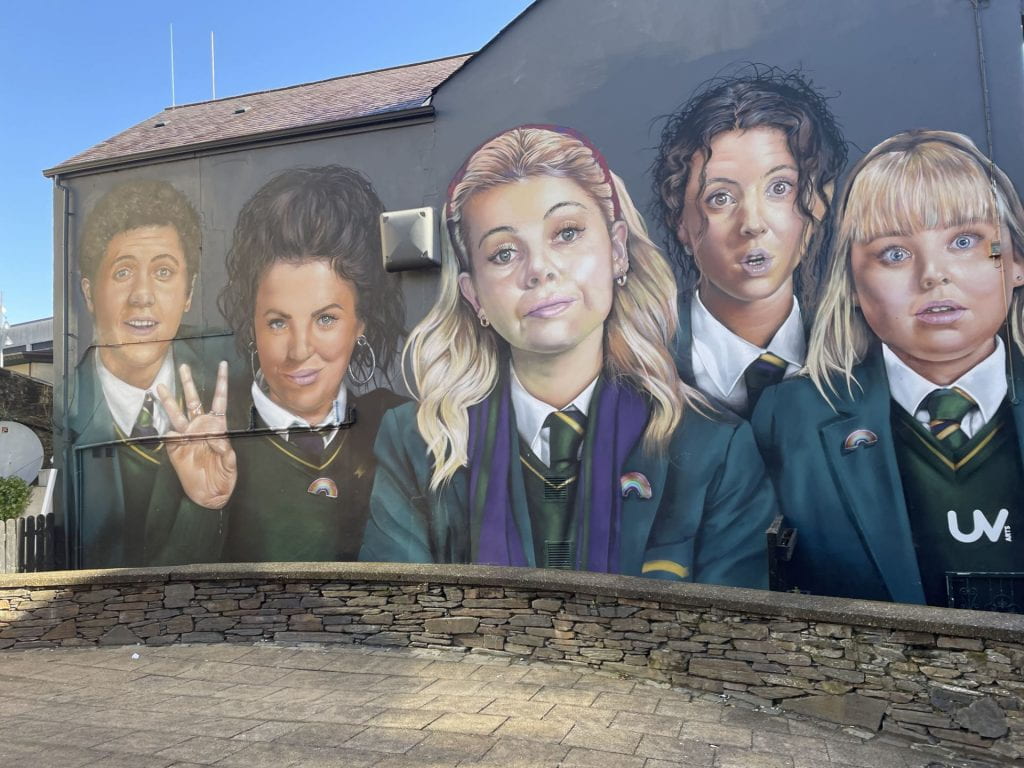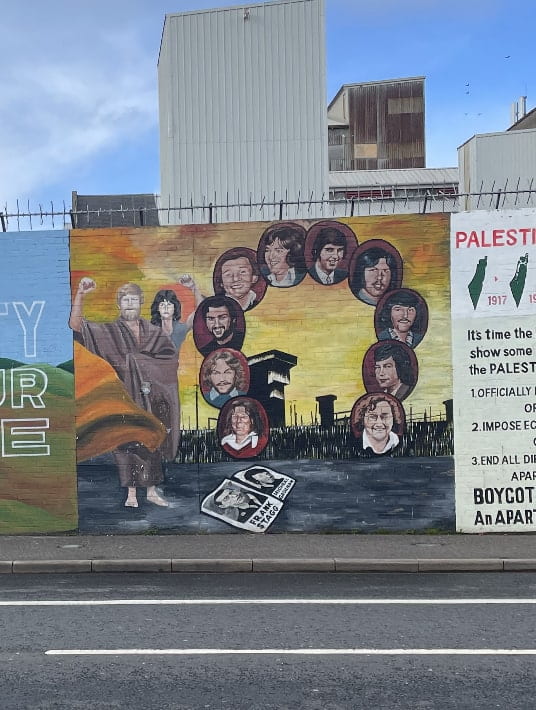Murals in Belfast and Derry: How the Troubles are Remembered Today
Georgia Flynn
During our trip to Belfast and Derry I saw many murals relating to the Troubles. These served as a reminder of this sectarian war and the fact that sentiments of this conflict are still very prevalent today. One mural that struck me in particular was titled The Death of Innocence. It shows a 14 year old girl named Annette McGavigan who was shot by a British soldier in 1971, making her the 100th civilian to be killed during the Troubles. She is shown here in her school uniform which she was wearing when she was killed. This mural struck me because this young girl in her school uniform really shows the effect this conflict had on children and young people. Annette was killed by a soldier trying to quell Republicans and Nationalists fighting for an end to occupation, oppression, and internment. This innocent girl was just one of many children and young adults who were killed in this bloody conflict. An important element of this mural is the rifle down the side which is broken in two. As our tour guide explained, the rifle was originally whole and was changed in 2006 by the artist to symbolize an end of violence in Northern Ireland. This mural directly engages with the past as it commemorates an innocent teen who was murdered as a result of this sectarian conflict, yet it also looks towards a peaceful future by the artist returning to break the rifle. This mural is located in the Bogside of Derry. Derry was the location of lots of demonstrations and violence during the Troubles including “Bloody Sunday”, as well as where Annette was killed. This mural serves as a reminder of the many young lives that were cut short as a result of this violence.

Another mural that caught my attention in Derry was this one showing the main characters of the show “Derry Girls”. This comedic show displays the lives of four teenage girls from Derry and one of their English cousins, set during the 90s. While these characters are experiencing the ups and downs of teenage life, they are also subjected to military occupation, bombings, and conflicts with Protestants that were a normalized part of life during the Troubles. This show displays how real life existed on top of these elements of the Troubles, mixing deep and serious events of this time with the comedic and relatable main characters. As a fan of this show who got a deeper understanding of the Troubles during this trip, this mural really stuck out to me. This mural displays a connection with the past in the setting and subject of the show, as well as how this time is remembered by people who experienced it.


A third mural that stuck out to me was this one shown in a largely Catholic part of Belfast on one side of the peace wall, which could be seen by people flying the tricolor Irish flag. This contrasted with the opposite side where British flags were flying and sidewalks and street lamps could be seen with red white and blue paint for the United Kingdom. This mural commemorates the 10 hunger strikers who died in 1981. This was the culmination of 5 years of protests by IRA prisoners in response to having their Special Category Status taken away, meaning that they were not afforded any benefits but treated as convicted criminals. The protests started with the blanket protest, which can be seen on the left side of this mural, then the dirty protest, then lastly, a hunger strike in which 10 IRA prisoners including IRA leader Bobby Sands (who had been elected as an MP while in prison) starved themselves to death. This mural stuck out to me because of the importance of the commemoration of these people. They chose to fight back against not being recognized by the British government as a political institution, and their sacrifice showed that neither side was willing to concede and the British government showed no mercy to their protest, which resulted in their death. This mural engages directly with the past and serves as a reminder of the sacrifices that many Republican nationalists went through for the importance of their cause. This mural doesn’t dilute the emotion and violence of this conflict by leaving out elements of now and a new era of peace in Northern Ireland.





